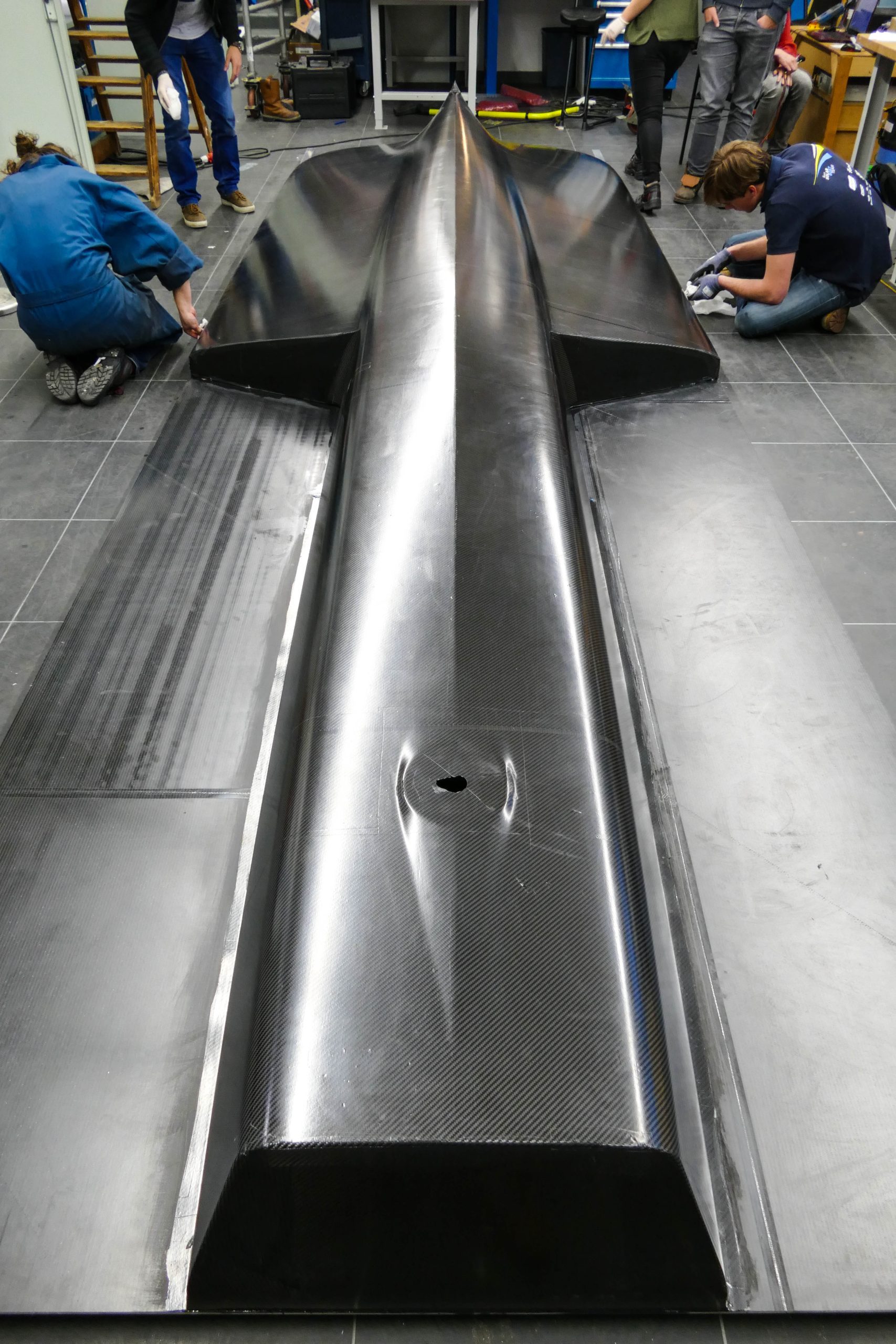The past few weeks have been very encouraging for the team. The boat that we designed is finally taking shape and it is now time to assemble every part of the boat. This is also a good way for our team to see whether everything has been produced according to our design.
Rebecca Belmer places adhesive bonded thread ends to connect carbon with aluminium. (Photo: Zwartwit)
The hull and deck of our boat, which we wrote about in our last article, are finished and arrived at our workshop in the D:Dreamhall in Delft. The deck is attached to the hull and a wrap will be placed on the outside to make the boat watertight and beautiful. Even though the hull is about 10% bigger than the previous one, we still managed to make it about as light as the 2016 boat!
Holes are bored in the hull for the struts. The struts, which were CNC (computer controlled) milled for us by our sponsor Bayards, are anodised in blue. The wings will also be blue!
The team is now working on the milling and lathing machines in the hall, finishing parts for the boat’s steering system. The motor, that will drive the propeller, is currently being tested and fine-tuned for maximum power efficiency. It is a busy time for our electronics department since they have to lay the entire cable tree in the hull. This can be seen as the aorta of the boat. In the coming weeks, all these parts will be assembled to make the boat ready for the testing phase.
The assembly of the boat can be tricky
During this period, the boat’s subsystems will be attached to the hull and connected to each other to make the boat fully functional. The struts will be attached to the steering system, enabling the pilot to control the motion of the boat. Bearing housings for the struts will be laminated to the hull, so the strut assemblies can be securely attached to the boat. The hydrofoils will then be attached beneath the struts, and electric actuators will be included to allow the pitch of the wings to be controlled. The motor will be attached to the top of the rear strut assembly and connected to the driveline. The steering system will be attached to the deck just in front of the cockpit and a dashboard will be included for the pilot to switch on the electric components. The electric cables will be carefully installed and connected to electronic components like the battery, motor, and solar panels.
The assembly of the boat can be tricky, since there are many interfaces between the different subsystems. It is very important that the boat’s components are installed at exactly the right spot and that they don’t interfere with other systems. Although the next few weeks could be challenging for the team, it is very encouraging to finally see the ideas that we have been working on for months come to fruition. This boat allows us to show what is possible with sustainable technology and we are ready to take the next step: winning the Solar Sport One competition with an incredibly efficient boat.
Michiel Giliam, Chief Dynamics & Stability.
The Delft Solar Boat will be unveiled in Nieuw Lekkerland on April 5, 2018. Follow the Facebookpage for the latest update.
Read the previous articles:
TU Delft Solar Boat Team: building a carbon hull and deck
TU Delft Solar Boat Team: designing to win


Delta Lab / Delta Lab offers you the opportunity to share anything you really care about with the entire University community. E-mail us at delta@tudelft.nl.


![[Blog] Solar Boat takes shape](https://delta.tudelft.nl/wp-content/uploads/2023/12/©ZwartWit010.nl-06166.jpg)
Comments are closed.